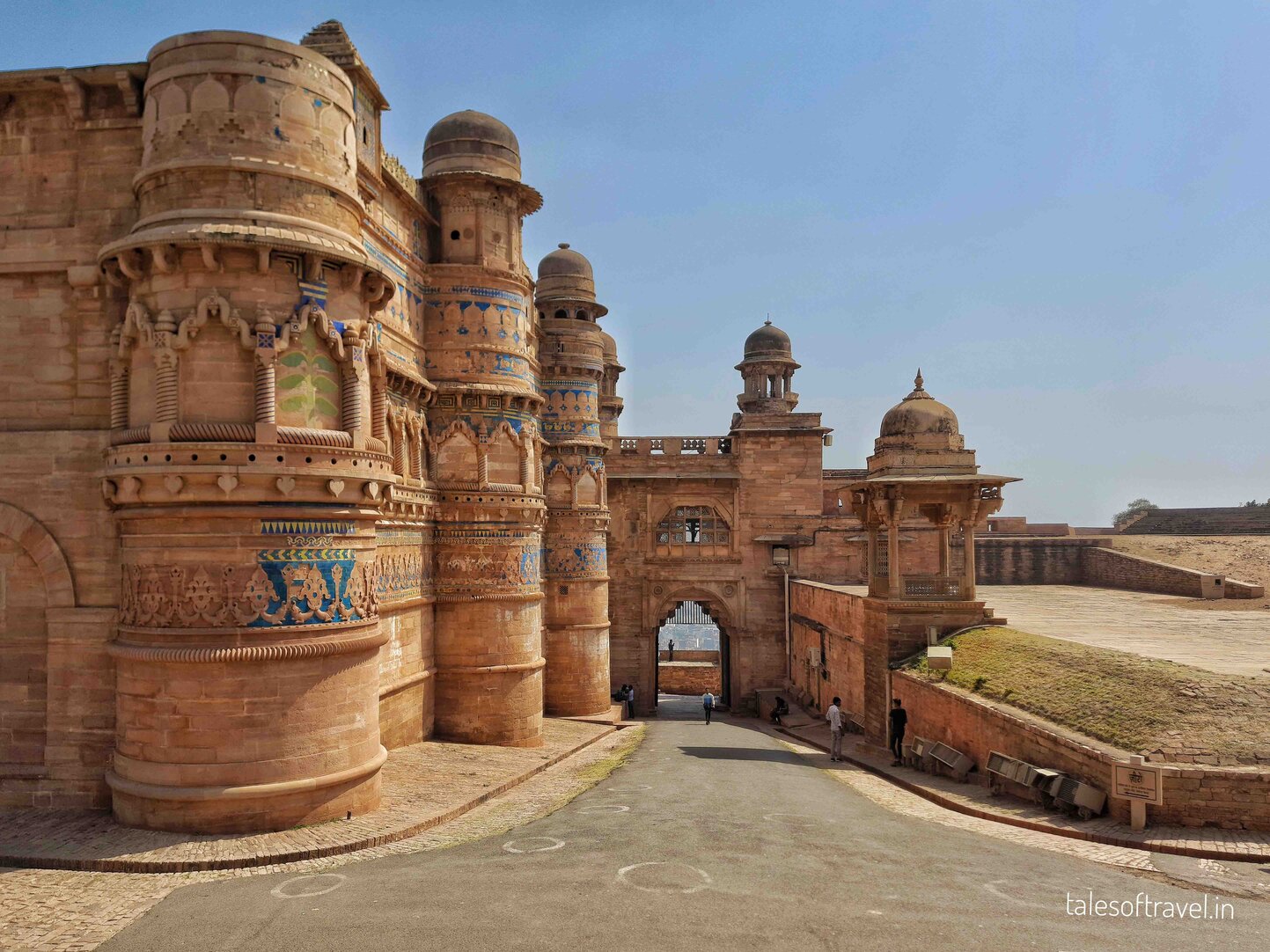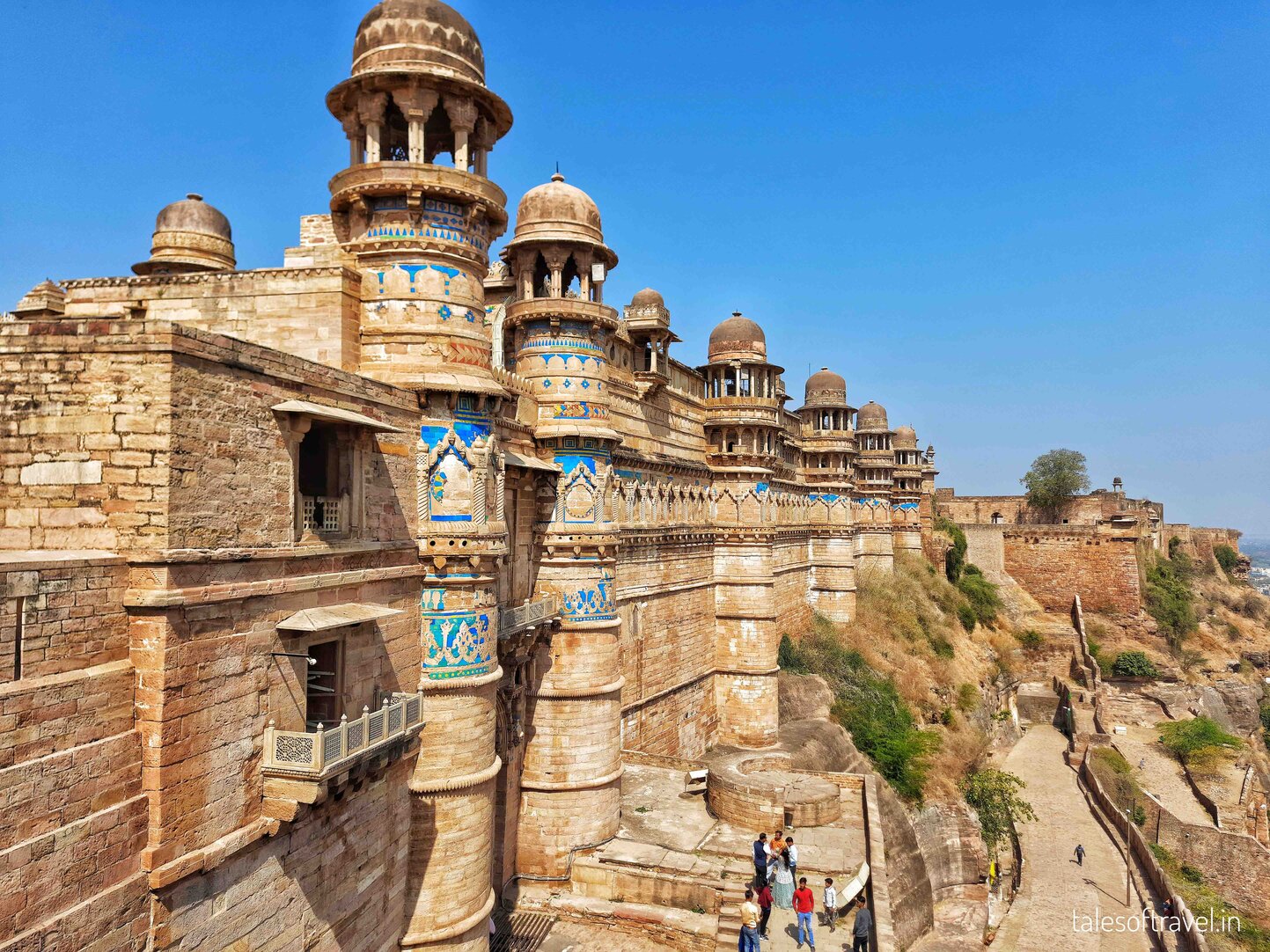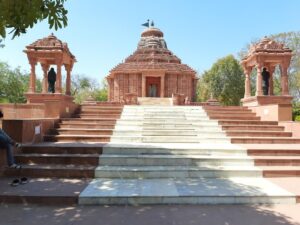Often known as Gibraltar of India, Gwalior Fort is situated near Madhya Pradesh in India. It was built in the 6th century by using lime mortar and Sandstone. This fort is constructed on 741.3 acres.
Gwalior Fort is one of the most popular and eminent monument and is also considered to be a world famous tourist spot. Beauty with a rich heritage and a deep history can be a phrase that can be used to describe this place.
During 15th century Raja Man Singh Tomar himself made two palaces inside the fort which was named as “Gujari Mahal” and “Man Mandir”. Along with these palaces there are also different temples, ponds and garden in the fort which were constructed by different kind of kings around different period of time.
Who doesn’t want to see a place which has an utmost importance in the history. This fort is built on a huge Rocky Hill named “Gopachal”.
What is inside the Gwalior Fort?
There’s “Hathi Pol Gate” , this gate was earlier used by people who used to come on elephants. On the front part of the gate you can find 2 beautiful shining sculptures of elephant which is embarked on top of the gates and to welcome you.
There are five parts of the fort, and each part has kept its name on the basis of direction in which it is built. The elephant gate lies in the South East and it takes to the Man Mandir Palace.
Inside the Fort there are 21 beautiful temple. Shah Jahan Mahal, Jahangir Mahal and Karan Palace are the other significant structures inside the Gwalior Fort.
Also there is a school named as “Scindia school” which was built by Madho Rao Scindia for the Prince and the Princess of the Scindia family inside the Fort. This school was built in the year 1897. Even in the memory of late Hargovind Singh, a Gurudwara is also built inside the fort.
Gwalipa and Gwalior Fort
Well talking about the history of this place, there was a local king named Suraj Sen, who was a ruler of that place in around 3 CE.
Unfortunately the king was diagnosed with a disease called leprosy but at that point of time the cure or But treatment of this disease wasn’t available. So the king started losing the hope. He believed that he was soon going to be dead.
But to the gods grace a stage came to the king whose name was Gwalipa and he claimed to have a treatment for the disease leprosy.
Gwalipa asked the king to drink water from a pond. It is believed that this life saving pond still exist inside the fort. After drinking the water Suraj Sen was cured.
And that was the time when he decided to build a Fort in the respect of the that sage who saved his life.
Who Conquered Gwalior Fort?
Many successors of the king Suraj Sen ruled this fort after him. But the 84th descendant, Tej Karan lost the ownership of the fort.
Well this is not an end of history of the Gwalior Fort. Later on the different Sultans of Delhi Sultanate, Qutub Al Din Aibak, Iltutmish tried to capture the Fort.
When Sikander Lodi was trying to capture the fort, in that fight Raja Man Singh Tomar died. And eventually the fort went into the hands of Babur. The fort was even turned into prison for the prisoners and rivals by emperor Akbar in 1558.
From Mughals to Delhi Sultanate, from Marathas to Britishers, everyone tried their best to capture the beautiful Gwalior Fort an even controlled it for sometimes .
But then finally in 1886 Britishers gave the ownership of the Fort to Scindia family and they ruled over for some time, built some beautiful structures inside the Fort and now it was finally taken by the Indian government after independence.
Currently the Fort is managed by Archaeological Survey of India.
7 things you need to know about Gwalior Fort

Other than the history of Gwalior Fort, there are many important and interesting stuff that one should know about this place-
1. There is a presence of a prison inside the Gwalior Fort which was built in 8th It was believed that this prison was used by the ancient kings to give punishments.
2. From time to time different festivals, trade fairs, music festivals and carnivals are being organized for the visitors.
3. As we all know that number zero was invented in India and its usage in mathematics is found in one of the temples inside the Fort which is around 1500 years old inscription.
4. Since The Fort is constructed on a Rocky Hill, one can see whole city from the top which marks the geographical importance of this fort.
5. One temple inside the Fort which is known as Garuda monument is a Hindu temple which is constructed in Muslim style.
6. Again talking about the history of the Gwalior Fort,a tamarind tree can be found within the premises of the Fort which is being planted by the great musician Tansen.
7. At around 7:30 in the evening the famous sound and light show are being hosted in the Fort which can be witnessed by the tourist. This show happens at the Amphitheatre of the the fort.
Conclusion
For sure the history of Gwalior Fort is delicate and is a great personification of beauty. There are many beautiful forts in India that one can visit but Gwalior fort is always on the top of the one of the largest forts of India.
So visit Gwalior and relive the history in the form of the fort .





Pingback: Sas Bahu Temple of Gwalior - History, Story, & Highlights - Tales of Travel